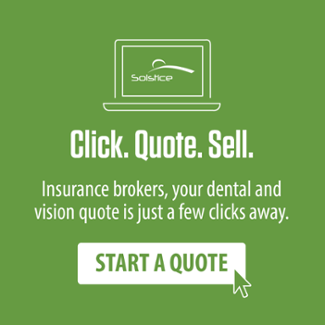By Kate Ranta on Oct 31, 2022 9:15:00 AM
Health literacy is important – a lack of it costs people time and money
What is the basic definition of health literacy? It is the extent to which a person can obtain, process, and understand basic health information and services so they can make the right decisions about their health.
Key takeaways:
- There is personal and organizational health literacy.
- Being health literate means employees get better outcomes and employers can save close to $5 billion per year.
- Health literacy levels in the U.S. are low: 41 percent say they rarely or never check the network status of a provider with their benefits.
- Health literacy includes a focus on eliminating health care disparities.
Health literacy has two parts: personal and organizational. The definitions of each were updated as part of the U.S. government’s Healthy People 2030 initiative. The focus is to “eliminate health disparities, achieve health equity, and attain health literacy to improve the health and well-being of all.”
As a broker you must be health literate and educate your clients. You are on the frontlines of helping people stay healthy. Low health literacy costs U.S. employers almost $5 billion annually, and almost 36 percent of adults in the U.S. have low health literacy.
On a practical level, you can make your clients more health literate so they can pass their knowledge on to their employees. Other than cost, health literacy rates have a ripple effect on companies, employees, and the healthcare system in general. Read on to find out more!
Why health literacy is important
People make choices every day that affect their health: what to eat, when to see a doctor, whether to smoke and other factors that may seem small to some. Being health literate includes knowing things like:
- Where the nearest hospital is
- Understanding how insurance works
- Reading insurance paperwork
- Paying medical bills
These skills are not taught by the healthcare system or educational institutions. This is where you, as a broker, can really show your value to clients. Low health literacy affects individuals, families, professional organizations, and healthcare delivery systems. It causes higher costs for everyone. Those who cannot understand health information have higher hospitalization rates, develop more diseases, and have a higher mortality rate.
A survey of those with employer-sponsored insurance found that:
- 41 percent said they sometimes, rarely, or never check whether their medical provider or facility is in-network.
- 67 percent of respondents said they had no idea they could compare provider or pharmacy costs.
- When it comes to health education, 40 percent said they were self-taught, and 33 percent got their information from family, friends, coworkers, or acquaintances.
How brokers can increase their clients’ health literacy
To get you started, the Centers for Disease Control and Prevention (CDC) has resources and tools available on their website. They include these recommendations:
- Make sure your information is accurate and presented clearly.
- Ensure the information is available in multiple formats – on the web, in video, and on paper.
- Background information is not helpful. Information should be presented as actions, as people need and want clear recommendations so they can do something.
- Encourage your clients to give their employees clear information that is easily understood.
The teach-back method
To reinforce the message, use the teach-back method. This method checks understanding by asking someone to repeat what they were just told in their own words. It is an effective way to confirm that you have explained things in a way they understand. Studies show that 40 to 80 percent of the medical information shared during office visits is immediately forgotten by patients. And almost half of the information patients do retain is incorrect. While you are not a doctor, you can help improve these outcomes in health literacy.
However you choose to educate, keep these tips in mind
- Assess baseline understanding before you present information. Ask questions and have your audience answer them.
- Use plain language. Medical terms can be confusing, so do not use them. Instead of “myocardial infarction,” say “heart attack.” Say “chest pain” instead of “angina,” and even go as far as to say “steak” or “hamburger” instead of “red meat.” This might seem simplistic, but your goal is to educate. So, you must use language every person in your audience will understand.
- Repeat, repeat, repeat. Not all at once, but repeat key points, and do not have too many of them.
- Encourage questions. Use an open-ended approach that encourages questions.
- Use written materials. But do not depend on them to educate. They should reinforce your message and be limited to one message at a time, such as, “How to check if your doctor is in-network.”
- Visual aids help. Visual aids include illustrations, images, and video. They help reinforce written and verbal communication. Here are some resources to get you started.
Remember that the end goal is a health-literate client with health-literate employees. This will result in people leading healthier lives with the skills to successfully navigate their healthcare. This saves money, keeps people healthier, and better utilizes the healthcare system. It also makes your clients really appreciate your efforts.
Your clients deserve to be health literate and have access to straightforward and affordable benefits coverage. You can deliver on that. Here is a free guide of the top dental terms brokers should know.
Any questions about your current Solstice products? Login to your portal on https://www.solsticemarketplace.com/
Want to start selling Solstice? Visit solsticebenefits.com, call 877-760-2247 or email us at sales@solsticebenefits.com





comments